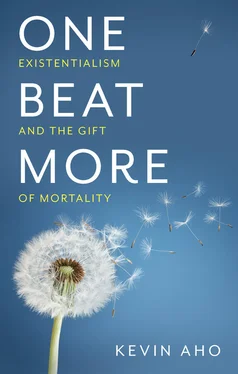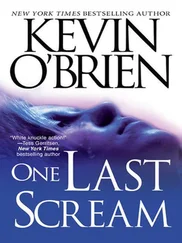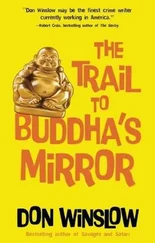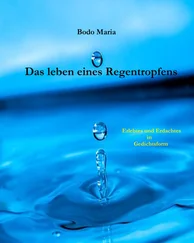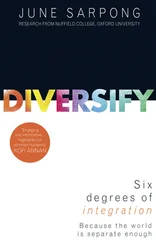But, insofar as I am self-conscious, I am also painfully aware that I did not choose to be born and that my being is always threatened by the possibility of non-being, by death. This leads to the second principle of existentialism , that the truth of our condition is revealed to us not by means of reason or philosophical reflection but by our emotions and our capacity to feel. When existentialists refer to feelings of “nausea,” “anxiety,” and “dread,” they are trying to capture the gnawing and inchoate sense we have that there is something wrong with us, that there is nothing that ultimately grounds or secures our lives, that there is no reason for us to be at all. Of course, the existentialist also understands that we spend much of our lives fleeing from this painful awareness. We cling to our comfortable routines and social roles; we distract ourselves with gossip and we numb ourselves with intoxicants, soft addictions, and fantasies of an afterlife, all in an effort to escape the feeling of our own groundlessness. But the existentialist makes it clear that the anguish we feel is not something we should recoil from, because it teaches us basic truths about who we are: it teaches us that we are temporal creatures, that our existence is in fact precarious, ambiguous, and uncertain. Understood this way, these unsettling feelings present opportunities for personal growth and transformation; they have the power to shake us out of self-deception and complacency, reminding us of what is truly at stake in our brief and precious lives.
And this leads to the third principle of existentialism , that the primary aim of existence is not to experience pleasure or material success. It isn’t even to be happy or to be a good person. The aim, rather, is to be authentic , to be true to oneself. This means that I should not just conform, or try to fit in with the socially prescribed roles and values of the day. I should commit to the values that give my life meaning and that matter to me as the unique individual that I am. But one of the keys to being true to oneself is to first recognize that there is no stable self or “I” to begin with, that the very idea, in Nietzsche’s words, of an enduring self “is a fiction”: one’s self “ does not exist at all .” 6The first step on the path toward authenticity, then, is to be open and honest with ourselves about our own protean nature and the ambiguity of our condition.
In this book I put forth the idea that it is often easier to be inauthentic and to live in a state of self-deception when we’re young and healthy. Brimming with strength and vitality and facing a future wide open to possibilities, we feel secure and invulnerable, as if death wouldn’t apply to us. But, as we move into old age, it becomes increasingly difficult to live in denial. The reality of finitude presses in on us every day as our bodies weaken, as illness overtakes us, as friends and family members die. For the older person, as Beauvoir reminds us, “death is no longer a general, abstract fate: it is a personal event, an event that is near at hand.” 7I want to suggest that growing old may actually push us in the direction of authenticity, of facing and accepting the frailty of our existence, and in this way makes it possible to live with a renewed sense of urgency and purpose.
Of course, it is also important not to romanticize the aging process. It is filled with meaningless suffering and loss; it can leave us feeling abandoned, crippled by depression and filled with anger. But the point of this book is to unsettle the common view in our society that old age is some sort of wasting malady or affliction. As American psychologist James Hillman points out, the original meaning of the word “old” has nothing to do with deterioration and decline; it is formed on an Indo-European root that meant “to nourish” and “to be mature”—the same root we find in the Latin alere (“to feed, rear, nourish, nurse”) and alimentum (“nourishment”). To be old, in this light, is to be “fully nourished, grown up, and mature.” 8This may be why the elderly patients in my cardiac rehab appeared to be so different from me. Whereas I was panicked at the thought of coming face to face with death, they were more composed and mature. Nourished by their vast life experience, they seemed better prepared to integrate and accept death into their lives and cherish the limited time they had left.
In the following chapters I try to shed light on a simple idea: that our life is not diminished but enhanced when we are honest and accepting of ourselves as aging and dying. When Rilke refers to the “masterpiece of a long-ripened death,” he is pointing out the ways in which growing old can nourish us by releasing us from habituated patterns of self-deception and from the anxieties of denial and can help us come to an awareness of what genuinely matters in our lives. Aging, understood this way, is a long and slow instruction that teaches us the most important lesson: “to learn how to die,” how to recognize that the future is an illusion and that all that exists is the beauty and mystery of the present moment, a moment we all too often take for granted in the harried rush of youth and middle age. 9The autumn of life, then, can be viewed not just as a time of physical decline and infirmity but as one of existential renewal and awakening, a time that allows us to experience what Rilke calls “the ripe fruit of the here and now that has been seized and bitten into and will spread its indescribable taste to us.” 10
1 1. John Leland, Happiness Is a Choice you Make: Lessons from a Year among the Oldest Old (New York: Sarah Crichton books, 2018), p. 29.
2 2. Friedrich Nietzsche, The Gay Science, translated by R. Polt. In C. Guignon and D. Pereboom (eds.), Existentialism: Basic Writings (Indianapolis, IN: Hackett, 2001), aphorisms 276 and 382.
3 3. Albert Camus, The Rebel, translated by A. Bower (New York: Vintage Books, 1956), p. 72.
4 4. Rainer Maria Rilke, Letters to a Young Poet, translated by R. Snell (Mineola, NY: Dover Publications, 1962), p. 12.
5 5. Søren Kierkegaard, The Sickness unto Death, translated by A. Hannay (New York: Penguin Books, 1989), p. 43.
6 6. Friedrich Nietzsche, The Will to Power, translated by W. Kaufmann (New York: Vintage Books, 1968), aphorism 370.
7 7. Simone de Beauvoir, The Coming of Age, translated by P. O’Brian (New York: W. W. Norton, 1996), p. 440.
8 8. James Hillman, The Force of Character and the Lasting Life (New York: Ballantine Books, 1999), p. 41.
9 9. Rainer Maria Rilke, The Poet’s Guide to Life, translated by U. Baer (New York: Modern Library, 2005), p. 121.
10 10. Ibid., p. 117.
To see yourself is to die, to die to all illusions.
Søren Kierkegaard
In his classic analysis of the concept of death in children, existential psychotherapist Irvin Yalom describes how youngsters protect themselves by anthropomorphizing death, treating it as if it were something separate from them and giving it a skeletal and ghostly human form. In a conversation with a therapist, Bobby, a four-year-old, says:
[B.] Death does wrong.
[T.] How does it do wrong?
[B.] Stabs you to death with a knife.
[T.] What is death?
[B.] A man.
[T.] What sort of man?
[B.] Death-man.
[T.] How do you know?
[B.] I saw him. 1
For the existentialist, our childhood fears of “death-man” persist deep into adulthood. Death-man is deteriorating; he is disabled, thin, and frail; he has translucent skin, yellowed and missing teeth, and a stale smell. We don’t want to be near death-man because he reminds us of where we are heading. When I was in cardiac rehab I saw many incarnations of death-man, and they terrified me. It was inconceivable that I was like them. But, back on campus a few weeks later, I realized that I was death-man. Although the external defibrillator I was wearing after my heart attack to protect me from cardiac arrest was largely concealed under my shirt, it was attached to a camera-sized box at my hip, with a black cord running up my side. It was unmistakably a medical device, and I felt the stigma. I was branded. When colleagues approached me, they would glance uneasily at the device and look at me with concern. What was especially disturbing is that some whom I considered close friends avoided me altogether or would simply smile and scurry away, uncomfortable with what I represented: shattered health, vulnerability, a reminder of death. These jarring experiences forced me to reflect on my obsession with youth, beauty, and strength and my negative views of old age and consider the fact that the pervasiveness of ageism in our culture may manifest itself unconsciously, as a way for us to protect ourselves from the awareness of our own mortality.
Читать дальше
